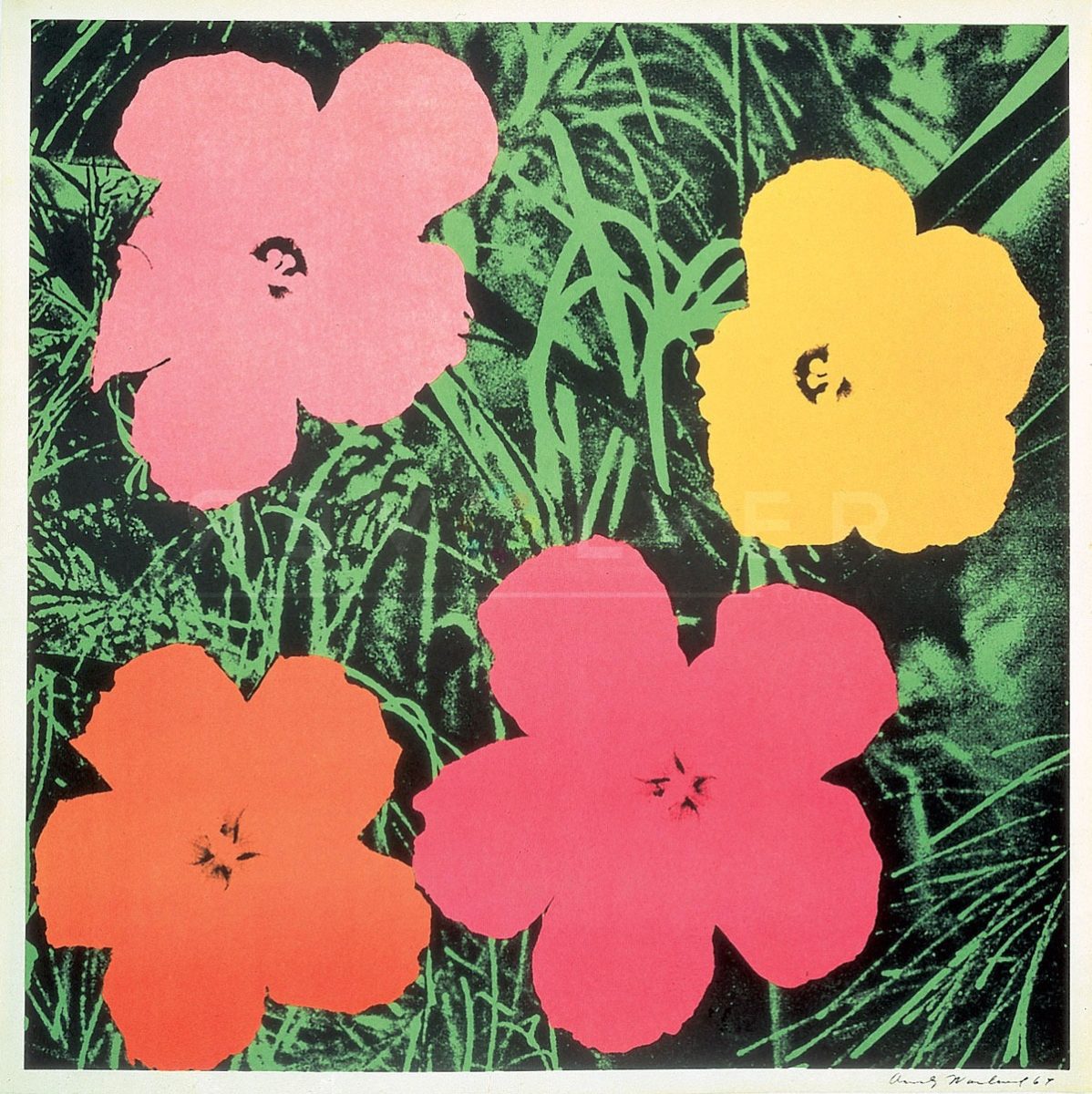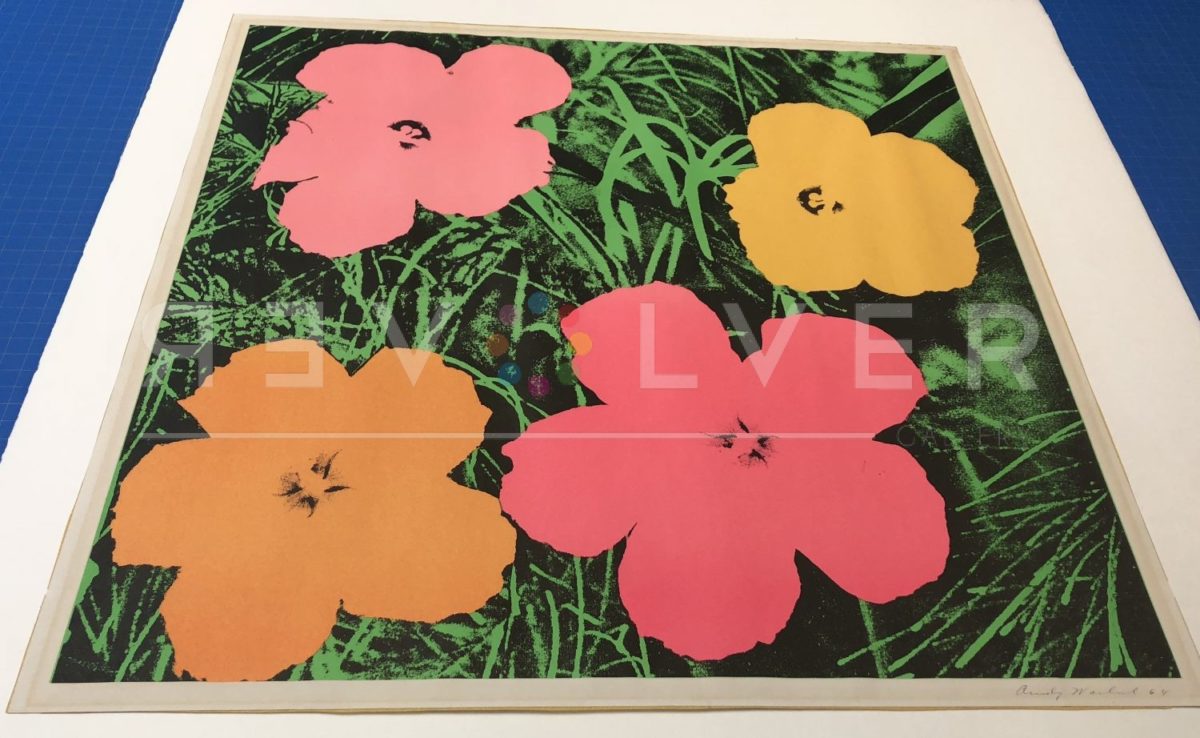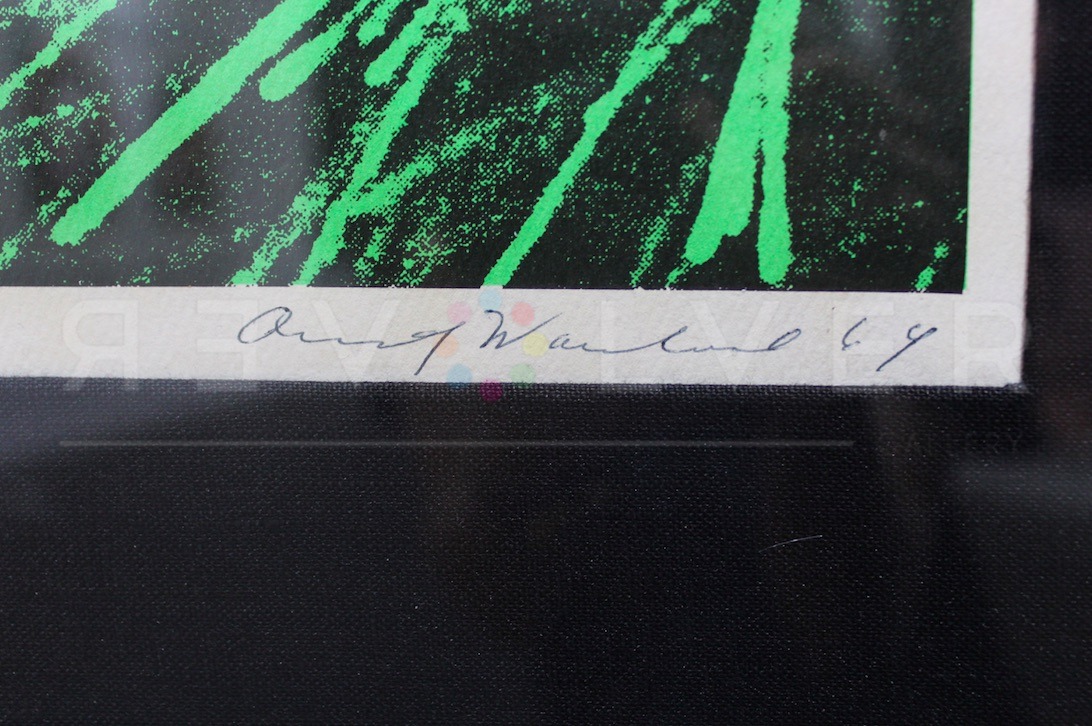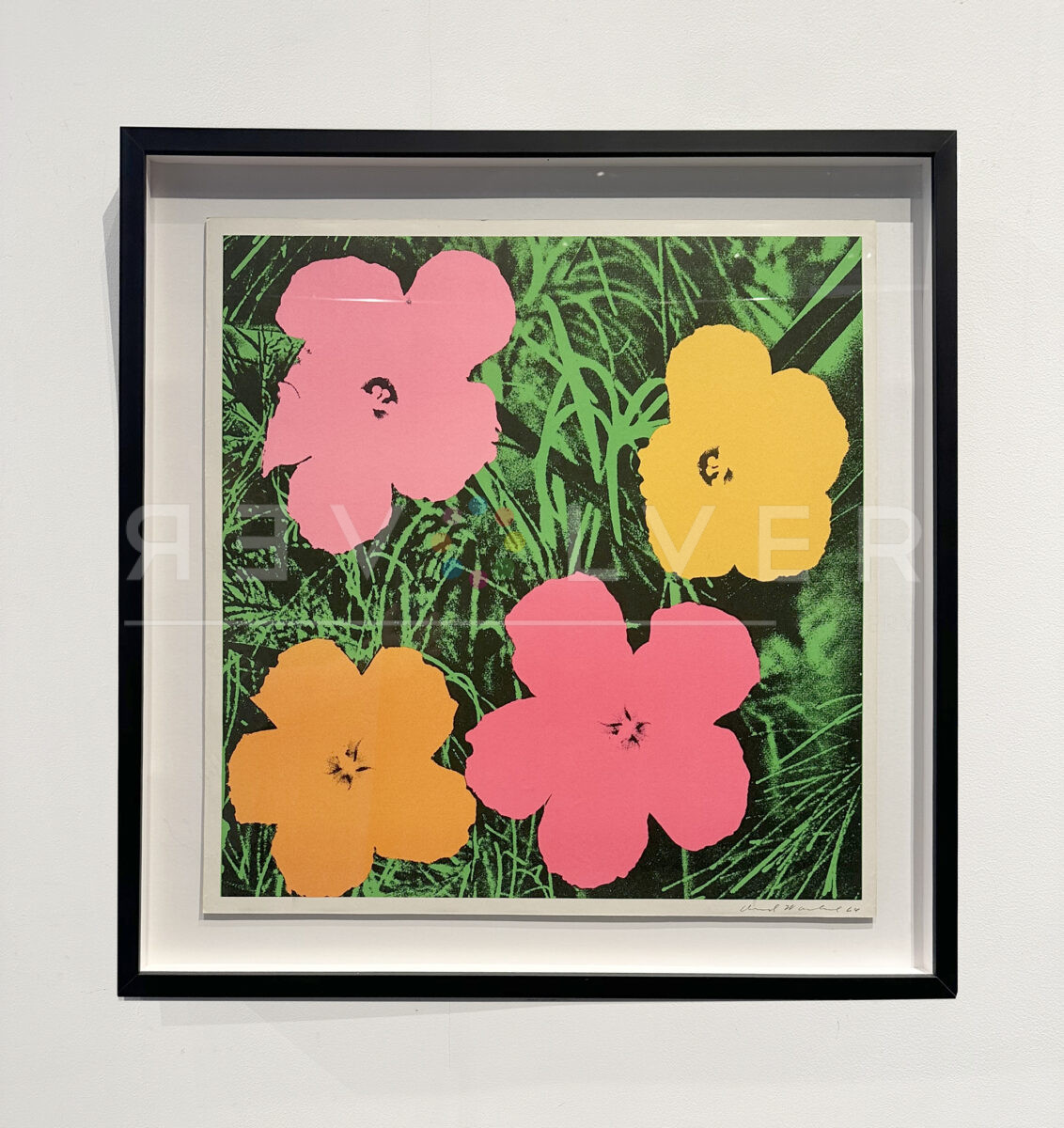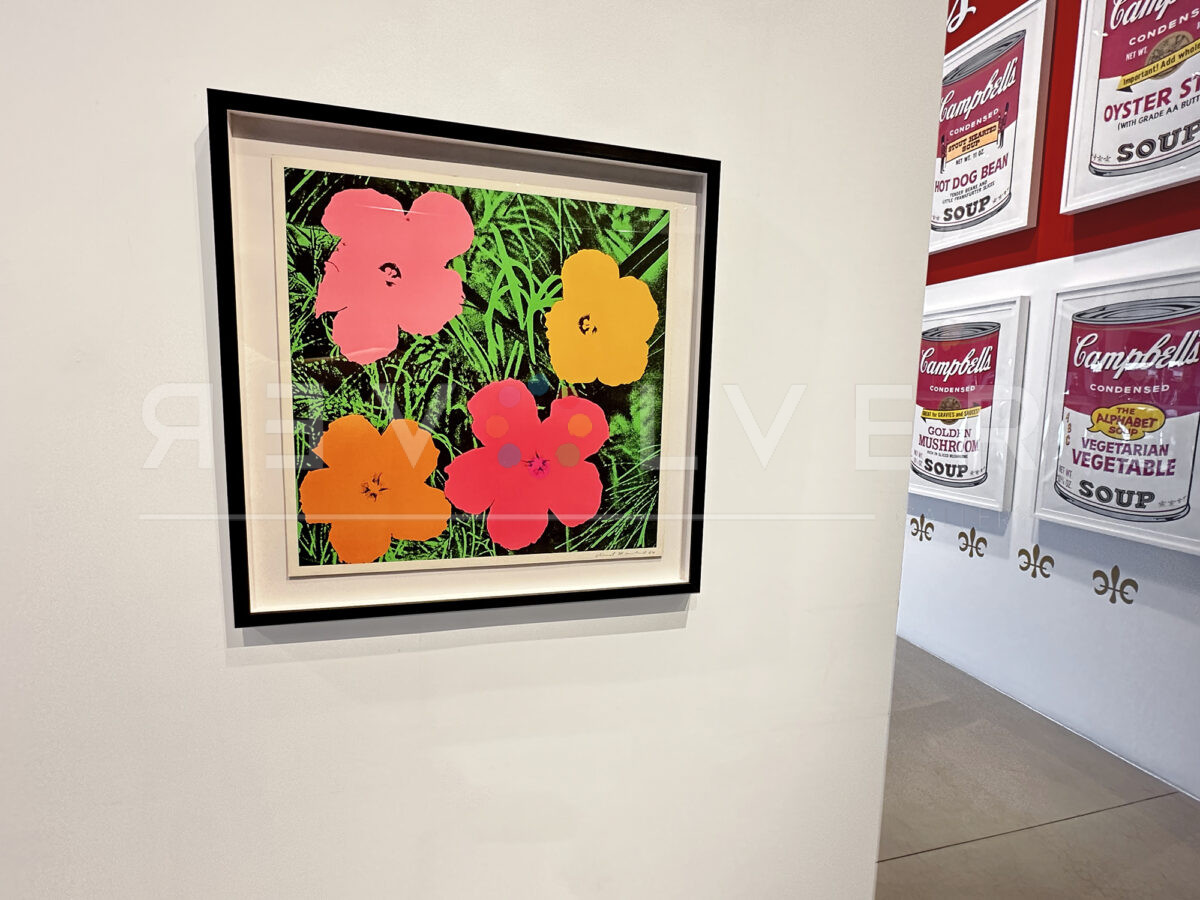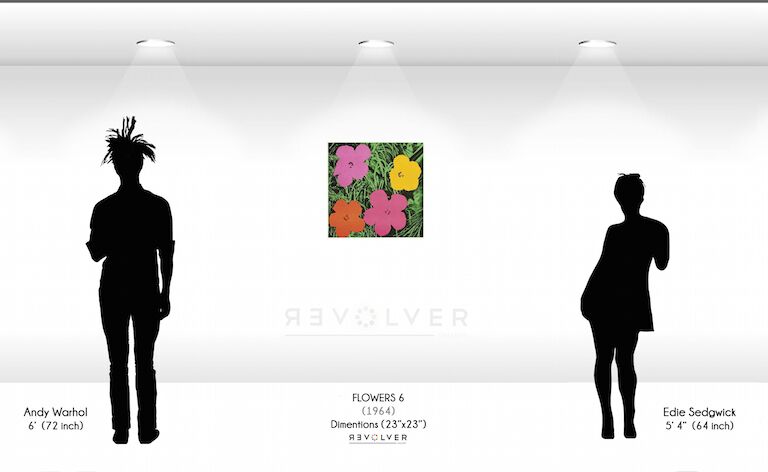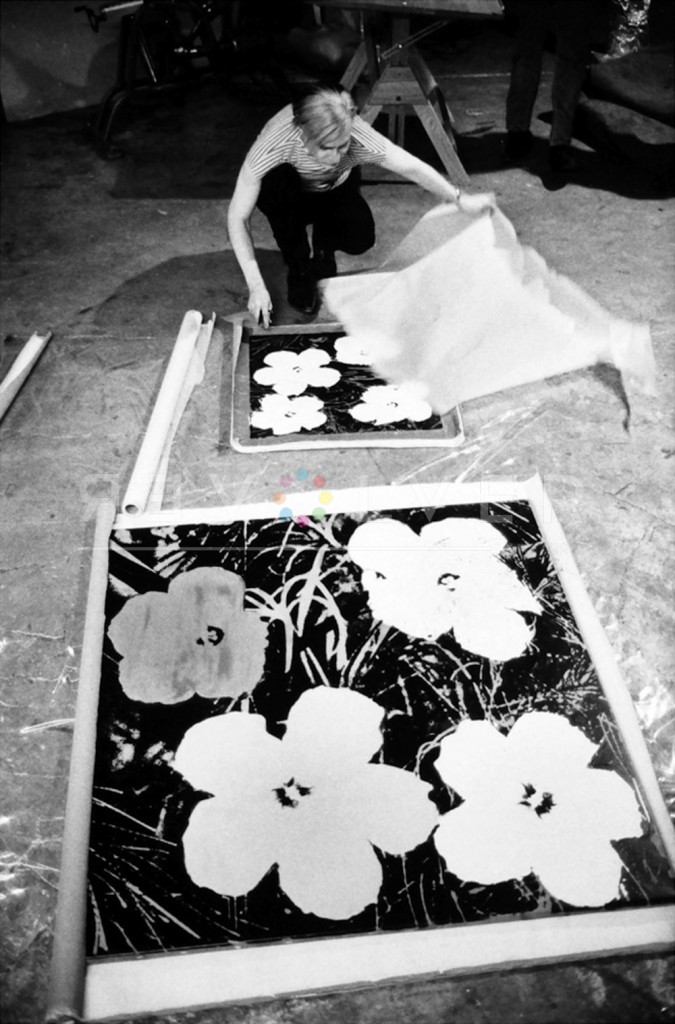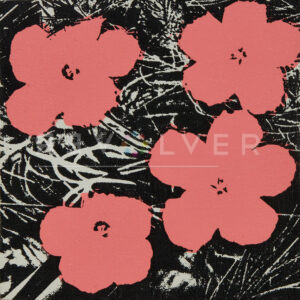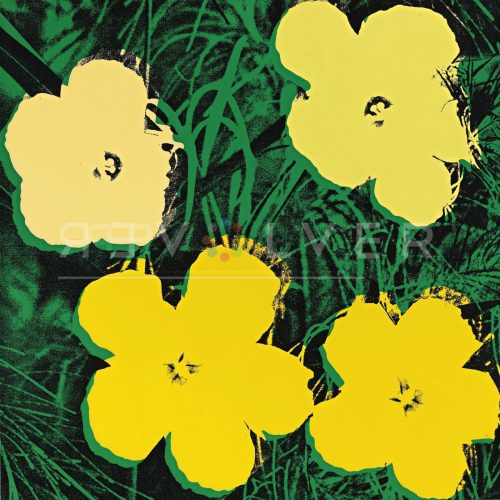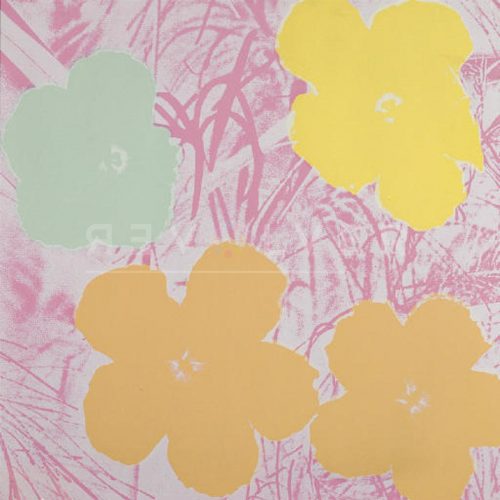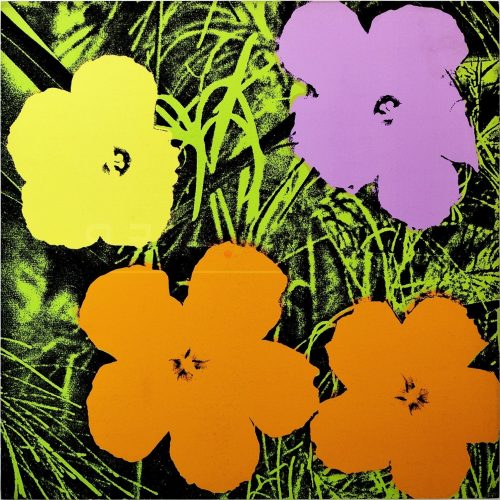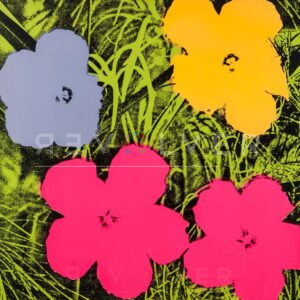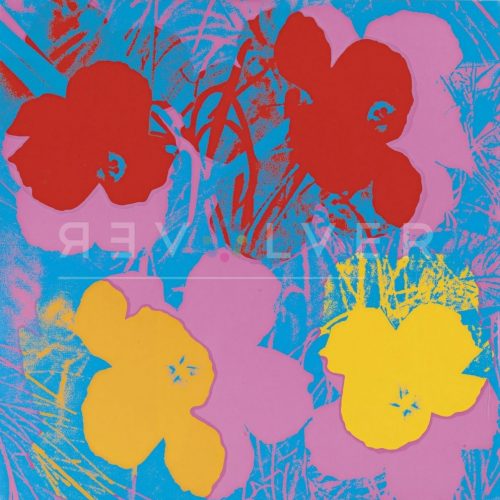Andy Warhol created Flowers 6 in 1964, notably to coincide with his first solo New York exhibition at the Leo Castelli Gallery that ran from November 21 through December 17, 1964. Subsequently, in 1970, he revisited this series for a print portfolio of the same name that used these artworks basis for its 10 variations.
The initial blueprint for Flowers comes from a photo by nature photographer Patricia Caulfield that was found in the June 1964 issue of Modern Photography. Like in many of his works such as Marilyn Monroe, Campbell’s Soup, and Liz Taylor, Warhol appropriated an image, cropped and abstracted it, and then played around with the colors. Specifically, in the case of the Flowers artworks, Warhol’s practice of appropriating ignited a legal dispute with Caulfield. This confrontation became a pivotal event, sparking ongoing debates concerning copyright laws and originality.
Flowers 6 is particularly notable for its depiction of the highly rare Mandrinette hibiscus. It presents a harmonious configuration of a pink flower, a red flower, a yellow flower, and an orange flower on a background of green grass. Andy’s signature use of saturation enhances the high-contrast, and brings out the details of the flowers. This creates a stylistically synthetic version of natural beauty that is both captivating and thought-provoking.
The Father of Pop Art’s distinct approach to this work mimicked the mass-produced, “maximalist” mindset of post-war society, particularly in terms of color, scale, and number. The exhibition for which Andy developed Flowers featured seven monumental-scale paintings, all focusing on the same subject. They alluded to the factory approach of the industrial age, which Warhol recreated in his studio, cheekily known as The Silver Factory. The show turned out to be a tremendous success, offering a cheerful departure from Warhol’s controversial Death and Disaster theme and Electric Chair. In these works, Warhol appropriated tragic news clippings as commentary on society’s increased apathy towards tragedy amidst the changing landscape of media presence.
In his vast oeuvre, Flowers stands as one of the only subjects Warhol revisited in almost every medium. This serves as a prime illustration of his fascination with repetition and his ability to imbue even the simplest subjects with is Warholian touch. Flowers offers an edgy take on the ages-old tradition of floral portraiture and solidifies Andy Warhol’s place in a line of artists whose works will forever remain in full bloom.
Photo credit: Andy Warhol silk-screening Flowers, 1965-7. Photo by © Stephen Shore.

